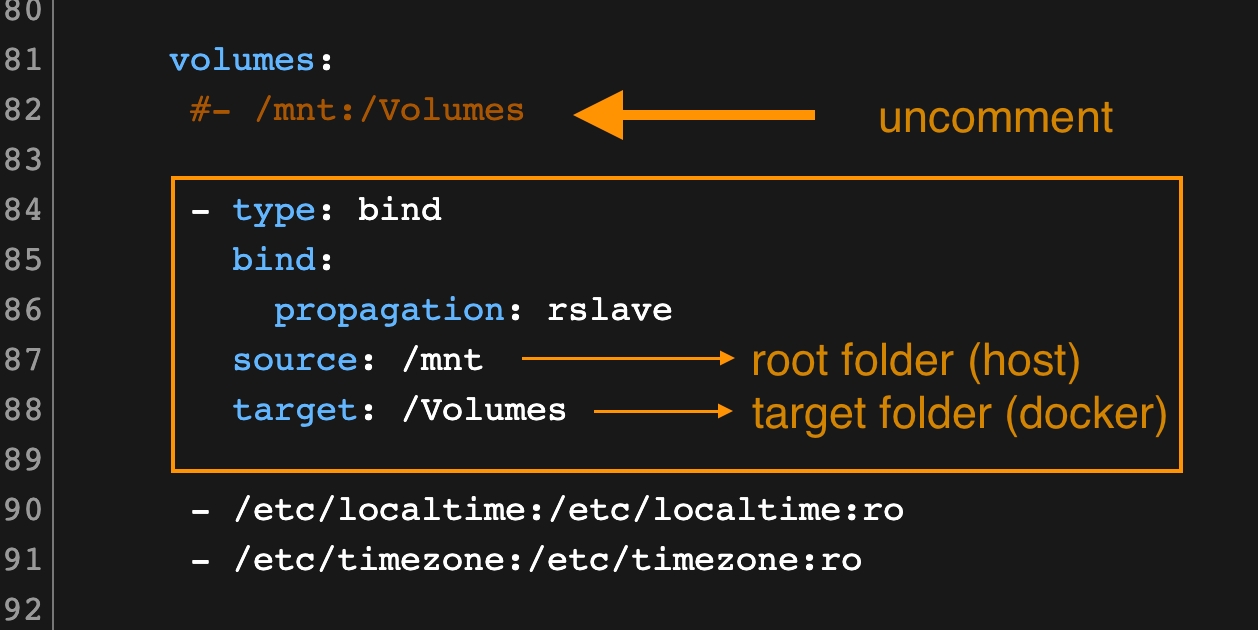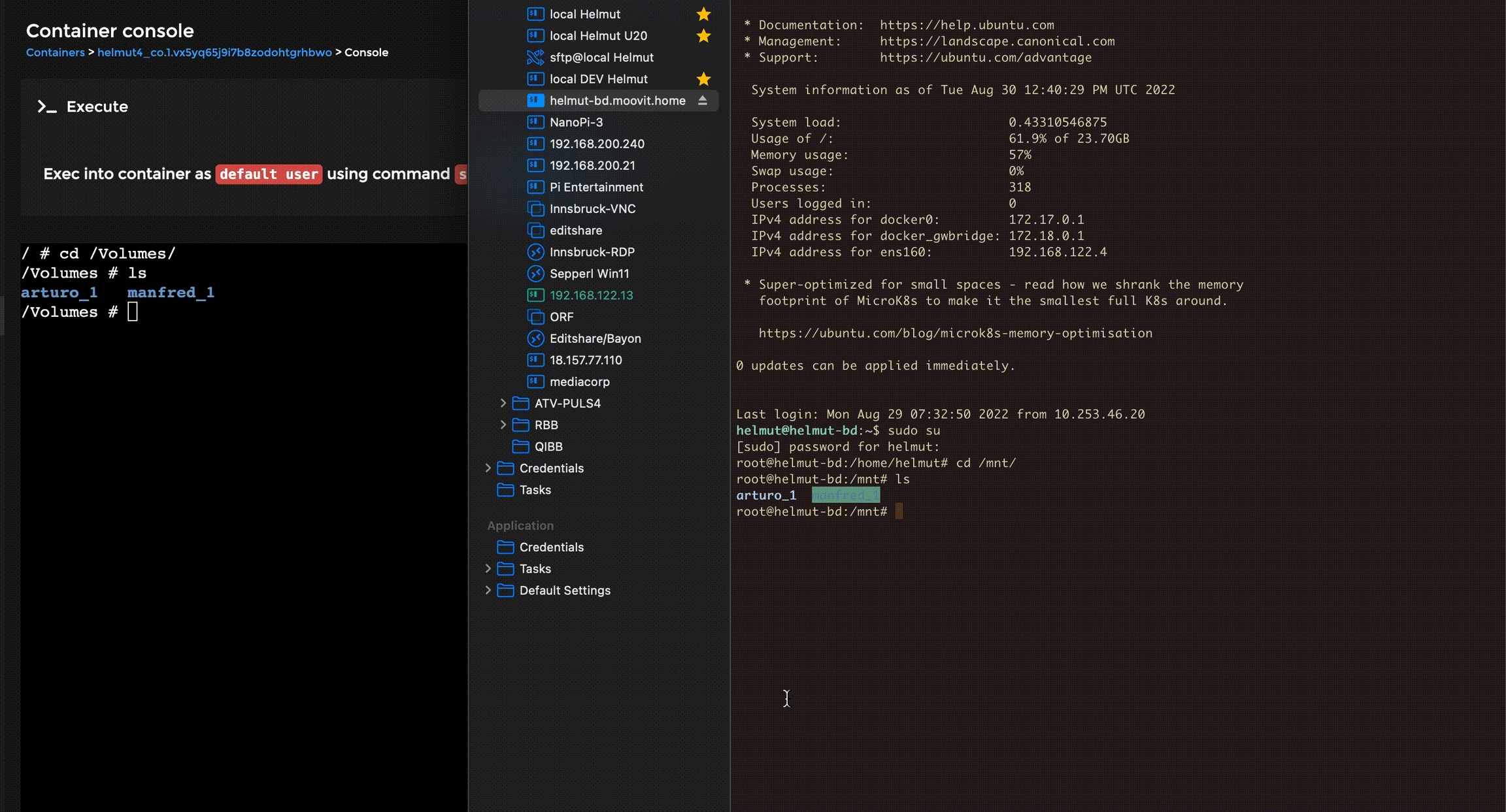Dynamic Share Mounts in Docker
Introduction
Using bind mounts in your Docker stack or Compose configuration allows you to dynamically mount the host’s /mnt directory (or parts of it) into the Docker environment.
This means that when a new share is added on the host, it automatically becomes available to containers without the need for manual reconfiguration.
One key advantage of bind mounts is that the specified file or directory does not need to exist beforehand on the host — Docker will create it automatically if it’s missing.
Bind mounts are highly performant but rely on the host’s filesystem structure being consistent and accessible.
Automatic or dynamic mounting of all subdirectories under /mnt can introduce security risks.
We strongly recommend consulting your IT department before implementing this approach.
Configuration Overview
The required configuration changes are minimal and straightforward to implement.
Make sure to remove or comment out any existing static /mnt:/Volumes mapping, as it will conflict with the dynamic mount setup when deploying your stack.

Example: Map Root Share
Below is an example of dynamically mapping the entire /mnt directory into Docker:
This configuration automatically exposes all subdirectories under /mnt to Docker, allowing new network shares or mounts on the host to become visible inside the containers.

Example: Map a Dedicated Folder
If you prefer to expose only a specific folder or share, you can define a more restricted bind mount:
This approach limits access to a defined directory, improving security and reducing exposure compared to mounting the entire /mnt tree.
Last updated